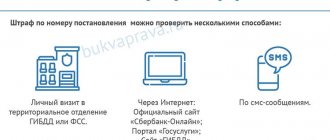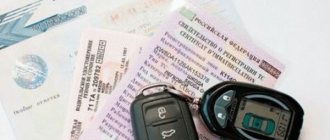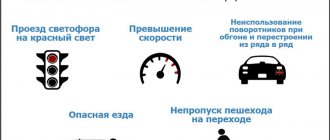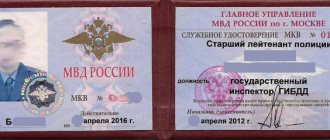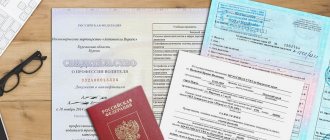Clarifications of the Supreme Court
In order to protect drivers, judicial practice in 2021 focused the attention of traffic police inspectors on the correctness of drawing up protocols. In particular, it was pointed out that mistakes should not be made. And this is fair, since the protocol on the deprivation of a driver’s license is important evidence in a particular case.
Thus, in 2021, the Supreme Court, represented by Judge Sergei Nikiforov, sided with a Moscow driver who was fined 1,500 rubles and deprived of his driver’s license for refusing to undergo a medical examination. The driver did not agree with the punishment and went all the way to the Supreme Court.
And here are the violations identified by the judge of the Supreme Court of the Russian Federation:
- Different times in the protocols (40 minutes difference).
- The traffic police inspector did not explain to the driver his rights and obligations (there was no signature or receipt).
- The witnesses also did not receive any explanations (there were also no signatures).
- Finally, the secretary of the magistrate’s court did not take care to properly notify the driver about the place and time of the consideration of the case (the electronic request in the system was in the “processing” status, and the driver did not receive registered letters).
And what's the result? The court found too many significant errors, including in the preparation of the protocol. As a result, the decisions of the lower courts were overturned, and the administrative prosecution of the driver was terminated due to the lack of proof of the circumstances. Well, of course, they returned the license and the fine paid.
As you can see, the Supreme Court of the Russian Federation competently examined the case and identified serious violations that played in favor of the driver. But, unfortunately, in 2021, magistrates often turn a blind eye to errors in traffic police protocols. As a result, the case is considered immediately, and the arguments of motorists and their defenders are not taken into account. The last one has to go to the very end, involving the Supreme Court of the Russian Federation.
Below we will consider which mistakes can lead to the collapse of a case in court, and which should not be taken seriously.
What the Supreme Court says
Judicial practice indicates to traffic police inspectors that documents are drawn up correctly, since the protocol is a very important argument in the case.
The following violations are often identified in protocols:
- The time of violation differs.
- The duties and rights of the driver are not explained, there are no signatures.
- The rights of witnesses are not explained.
- The driver was not notified of the date of consideration of the case.
As a result, the Supreme Court finds many serious errors in the preparation of protocols, decisions of regional courts are canceled, and drivers are acquitted for lack of evidence.
Is it possible to avoid deprivation of rights if the administrative protocol is drawn up with errors?
Yes, but the violations must be significant. To be even more precise, the error should cast doubt on the very fact of proof of the violation.
Does a mistake in one letter of the surname of the person involved cast doubt? No. Does a mistake in the address cause a violation if a driver is cited for driving into the oncoming lane in violation of traffic rules? Of course, there are already questions about the legality of deprivation of rights.
By the way, errors will be considered by a specific judge in a specific case of deprivation of a driver’s license. The Code of Administrative Offenses of the Russian Federation does not contain any signs of invalidity of the protocol. But we can find the requirements for the content of the document that interests us.
If there is a typo in the last name, first name, patronymic?
This is considered a technical error, and deprivation of rights cannot be avoided.
Example: instead of the surname “Baikov”, the traffic police inspector wrote “Boikov” into the protocol, but the driver did not point out this remark to him. Or didn't notice the typo.
Inaccuracy in the last name, first name or patronymic does not detract from the guilt of the offender. If you ran a red light again, this was recorded by the patrol service registrar, there are witnesses, and a protocol has been drawn up - it is unlikely that deprivation of rights will be avoided solely on the basis of a typo in the last name (first name, patronymic). The judge will either not attach importance to the typo in the full name, or will send the protocol back to the official at the traffic police for correction.
On a note! Theoretically, in the second case, you can count on the expiration of the statute of limitations - in our case, 3 months from the date of drawing up the traffic police protocol (Part 1 of Article 4.5 of the Code of Administrative Offenses of the Russian Federation). If during this time the court does not consider the case and make a decision, then the period for bringing to administrative responsibility will pass. This means production will be stopped. And you will remain with the rights.
Incorrect violation date
Such an error in the protocol on the offense allows the case to fall apart.
For example, you were caught for driving into oncoming traffic on February 16, but the inspector indicated February 15 in the report. It happened that mistakes were made over the years.
There is a serious violation of Part 2 of Art. 28.2 of the Code of Administrative Offenses of the Russian Federation, which states that the protocol must contain “the date of its preparation.” Consequently, if the date in the column is incorrect, then the remaining facts in the protocol do not have a place to be. Perhaps you were abroad or in the hospital that day. This is what you need to build your defense on, pointing out to the court the error with the date - in writing in the form of a petition.
But it just so happens that the judge may consider the wrong date in the protocol to be an insignificant error. The file may also contain other documents (with the correct date) - a medical examination report or a report from a traffic police officer. Then the judge will address them. But he can return the protocol back to the traffic police for correction. And here again it is appropriate to rely on the statute of limitations. That is, delaying the appearance at the traffic police and the court due to notices and calls. 3 months will pass, the statute of limitations will expire, and the proceedings will cease.
Mistake with time
The situation is similar in the case of time.
Let us again turn to the explanations of the Supreme Court from the example at the beginning of the article. Two reports were drawn up against the Moscow driver: one indicated the time of the offense at 2 hours 40 minutes, and the other stated that the same offense was committed at 3 hours 20 minutes. That is, the time difference is 40 minutes. The Supreme Court considered this error to be significant, while lower courts had previously not attached any significance to it.
Conclusion: Draw the court’s attention to discrepancies in the timing of the AP. There is a high probability that the court will find this inaccuracy significant. And the administrative proceedings will be terminated for lack of evidence.
Incorrect address of the crime scene
Again, a lot depends on the judge and the strength of your arguments.
It would seem, what difference does it make, house number 25 or 26? And courts often do not notice addresses entered incorrectly into the protocol. It turns out that the offense was committed in one place, but in fact it is being considered at a completely different address. Perhaps at this very place there is no stop sign, turn, traffic light or other important objects.
What to do in such a situation?
- Attach to the petition the recording from the DVR, any other recording from street cameras, photos and testimony of witnesses.
- Contact the local government authority, prefecture or BTI - you need to get a certificate stating that the address does not exist in principle (if this is indeed the case). You can file a petition with the court to have this information obtained through a judicial request.
It is also important to trace the vehicle's movement pattern on the map. It is better to do this together with the judge in order to identify discrepancies with the data from the protocol directly during the analysis. In the future, this will allow the administrative case to be terminated and the deprivation of rights to be avoided.
No information about witnesses
Witnesses are invited, for example, if you are suspended from driving or are tested for alcohol intoxication. The inspector must find two people, or carry out the procedure on video recording - by virtue of Parts 1-2 of Art. 25.7 Code of Administrative Offenses of the Russian Federation.
At the same time, the traffic police officer must explain to the witnesses the provisions of Art. 25.1 of the Code of Administrative Offenses of the Russian Federation and the provisions of Article 51 of the Constitution of the Russian Federation. If this was not done and these two did not sign the protocols, this indicates procedural violations on the part of the traffic inspectors. Even if witnesses were brought in, but they did not sign, this is also a violation.
Another situation. You have been suspended from driving a vehicle, you are sitting in a patrol car, and the traffic police officer has already filled out a protocol on the suspension. His partner finds two witnesses, they come up and sign the protocol. In fact, this is a violation, since traffic police inspectors must draw up a report in front of witnesses, and not before they are found. And in such cases, you need to apply for the summons of witnesses to the court hearing. When answering the judge’s questions, they will confirm that they signed the already drawn up protocol. And on this basis the case easily falls apart.
A protocol with errors - is it possible not to lose your rights?
In this case, the violations must be serious, casting doubt on the fact of the violation. If one letter is incorrectly indicated in the surname, this is not considered a significant error. But, if the address of the scene of the incident is printed incorrectly, then many questions arise. Therefore, each mistake is considered individually in court.
Typos in last name, first name, patronymic
In this case, it is unlikely that deprivation of rights will be avoided, since this is a technical error. This does not make the offender less guilty. The judge will simply send the protocol to the traffic police inspector for correction.
Date of violation does not match
In this case, winning the case is much easier. For example, if you drove into the oncoming lane on March 16, and the protocol says March 15. Here is a clear gross violation of the Administrative Code, namely Art. 28.2 part 2. Maybe you were in a completely different place on this date. This is the argument that needs to be defended and brought to the attention of the judge in the motion.
But sometimes the court considers this an insignificant typo, since the documents may contain other evidence with the correct date. In this case, you can only count on the expiration of the statute of limitations. If 3 months pass and there is no court decision, then the case should be dismissed.
The time is incorrect
Lower courts most often do not consider this error to be significant, but the Supreme Court usually sides with drivers. Therefore, be sure to pay attention to this - the judge may rule in your favor, and you will remain with your rights.
Incorrect violation address
It all depends on the strength of the evidence. The difference in house number often goes unnoticed by the judge. It turns out that the driver violated traffic rules in one place, but in fact the case is being considered at another address, where there were no traffic lights or other important road signs.
In this case:
- Attach to the application a video recording of the car registrator, photographs, and data of witnesses.
- Take a certificate from the city service that the address indicated in the protocol is not in the city, or ask the judge to make a request.
In addition, check the car's movement pattern on the map, bringing this to the attention of the judge. This will help you maintain your driver's license.
Witnesses were not brought in
If a traffic police inspector stops you and forces you to blow into the phone, then there must be two witnesses present, or the procedure must be recorded on a video camera. The inspector is obliged to explain to them Article 51 of the Constitution of the Russian Federation and the Code of Administrative Offenses in terms of Art. 25.1 for signature. Otherwise, this will constitute a procedural violation.
Also, pay attention to the fact that witnesses are present when drawing up the protocol, and do not just come up and sign a document that has already been drawn up in advance, without understanding anything. If this happened, then demand that these witnesses be summoned to court. They will say there that they signed a previously prepared protocol. Then it's easier to win the case.
Important note!
- This article provides basic information, but each case is different.
- In 92% of all situations there are important nuances that can affect the outcome of the entire case.
- An experienced lawyer will study all the materials of the case and indicate in which direction to move.
Therefore, our website employs on-duty legal consultants who delve into each case and are aimed at solving it.
Ask a Question
or consult toll-free (Moscow), (St. Petersburg), 8 (all of Russia).
If the traffic police inspector did not explain my rights and responsibilities?
An obvious mistake by a traffic police officer who plays in your favor.
Back in 2005, the Supreme Court indicated that the collected evidence should be assessed from the point of view of compliance with the requirements of the law when received (clause 18 of the Resolution of the Plenum of the Supreme Court No. 5 of March 24, 2005). And now, in 2021, this is extremely relevant!
The logic is as follows: since the traffic police inspector did not explain your rights and responsibilities, it means you did not have the opportunity to use them properly. For example, immediately call the defender (lawyer), file a petition, challenge, or familiarize yourself with all the materials of the case. And it doesn’t matter whether you knew about it right away or not.
Since the traffic inspector violated the regulations, it means that the evidence he collected was obtained illegally. And this is a reason to terminate administrative proceedings. Therefore, film, attract witnesses and submit complaints to the higher authorities of the traffic police within 10 days from the date of drawing up the protocol - this is in your own interests!
Error 1: The inspector did not explain your rights
He is obliged to do this when drawing up a protocol on an administrative offense in accordance with Part 3 of Art. 28.2 Code of Administrative Offenses of the Russian Federation. If the inspector has not explained your rights under Articles 25.1 of the Code of Administrative Offenses of the Russian Federation and 51 of the Constitution, you cannot be held accountable. The logic is simple: your rights were not explained to you - therefore, you did not have the opportunity to use them adequately for protection. Unfortunately, many drivers do not know such legal subtleties and sign the protocol in the “rights explained” column.
Elizaveta Vladimirova, lawyer at Legal
Elizaveta Vladimirova, lawyer at Legal
Expert opinion
“If your signature is on the document, it will be difficult to prove that the traffic police officer did not explain your rights. However, it’s worth a try: when conducting administrative proceedings, a driver who has committed an offense can appeal the protocol to a higher official or other competent higher authorities. The complaint must indicate that the driver was not explained his rights and obligations when compiling the administrative material. This must be done immediately - it is advisable to submit additions and changes to the protocol before the proceedings begin (see Parts 1–2 of Article 28.8 of the Code of Administrative Offenses of the Russian Federation). If possible, bring in witnesses who will confirm that the inspector did not explain your rights.”
What if I don't have my signature?
Depends on where the signature is missing.
There is no point in refusing to sign the administrative protocol. This will not achieve anything. And, most likely, you will only make things worse for yourself - since the inspector will put a corresponding entry in the box, and then give you a copy of the protocol right on the spot, or send it by mail within 3 days (Part 4.1 of Article 28.2 of the Code of Administrative Offenses of the Russian Federation).
It is much better to indicate in the protocol that your rights and obligations were not explained to you - and this will be a serious argument in a dispute with a traffic police inspector at a court hearing.
Is the protocol valid with changes and corrections?
Yes, but changes are made according to the regulations:
- Firstly, this is done by the traffic police officer, who initially drew up the protocol with the sanction of deprivation of a driver’s license.
- Secondly, changes can only be made in your presence. Usually, for this purpose, employees send a notice to the driver so that he comes to the traffic police and is present when errors in the protocol are corrected. They can also call and be summoned to the department.
- Thirdly, after entering new data, the inspector writes the phrase “believe the corrected”, puts a stamp, and next to it - his signature. But you, if you have no objections, have the right to sign right away. Or make a note that will be attached to the accident report.
- If the protocol was drawn up in your presence, but then it was changed in your absence, and you were not informed about it, this is also a procedural violation. The court must recognize such a protocol as invalid evidence. As, for example, the Supreme Court did this in Resolution No. 18-AD19-64 of November 8, 2019.
And one moment. If you suddenly notice that the protocol contains information that you have not seen before, file a petition to recognize the protocol as inadmissible evidence in the case. And there are two options for where to submit the petition: to a higher official in the traffic police, or to the magistrate’s court.
In general, always make written documents. They are much more effective than your oral explanations to the judge (which he often ignores). If you file such a petition, it will definitely be added to the case, which means a compelling argument will appear in your defense box. And then there is a real chance to avoid deprivation of a driver’s license and other penalties.
